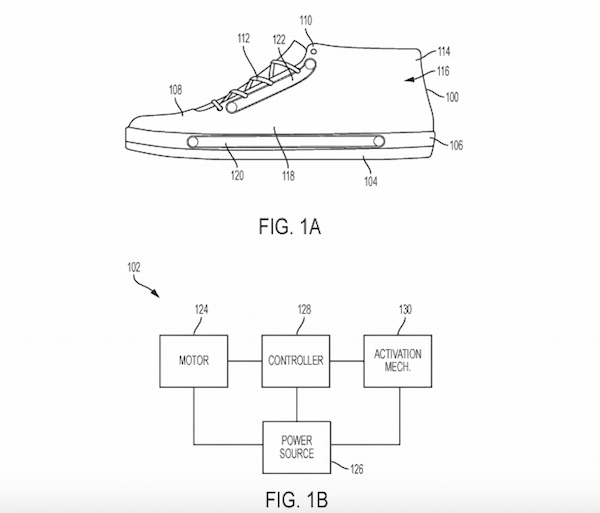Fitness companies put a lot of effort into the research and development so that they can come up with new products to catch their customer’s attention. But sometimes the companies go beyond the extraordinary and bring ideas which don’t make sense at all. The new shoe patent by Nike is an example of such an idea. The company has recently filed a patent of a shoe design which consists of a miniature treadmill which is fitted inside the shoe.
The ‘rotatable conveyor element’ installed inside the shoe is there to ease the process of putting on the shoes. The mechanism will be powered by a motor and might consist of sensors which will perform smart functions. It is a confusing question whether or not we need such a shoe. The design engineers at Nike say that they have proposed the design which will “assist the insertion of the foot into the footwear.” The information available from the patent is that the shoes will have “an upper configured to form a space between the upper and the insole and the conveyer belt would be configured to rotatably engage a body part of the wearer as the foot enters the space and draw the foot into space.”

According to Nike, the conveyor mechanism may feature an activation mechanism like a switch which will detect the presence of the foot. When activated, the switch will trigger the motor and will start rotating the conveyor belt which will assist the foot to enter the shoe easily. The document of the patent also mentioned that the design might include sensors to detect a change in orientation or movement of the footwear. This implies that the motor will reverse the rotation of the conveyor belt when the foot will be required to be withdrawn from the shoe.

The proposed design will also include a motor-powered zipper mechanism which will provide an additional opening in the collar or throat of the footwear. This will help when the foot will be removed or put in the shoe. Nike has also mentioned that this mechanism and its principles can be used in any footwear range. This is an interesting concept for those who have problems while putting on or removing their shoes due to any disability.
It will be interesting to see how the finished result of the proposed product will be. It is not sure if the company will bring the proposed shoe in the market or not. However, they brought the concept of self-lacing shoes called HyperAdapt to reality in the past. It is unsure if the ‘foot insertion assistance’ will bring a difference to the society or not but we will know once the product becomes a reality.


